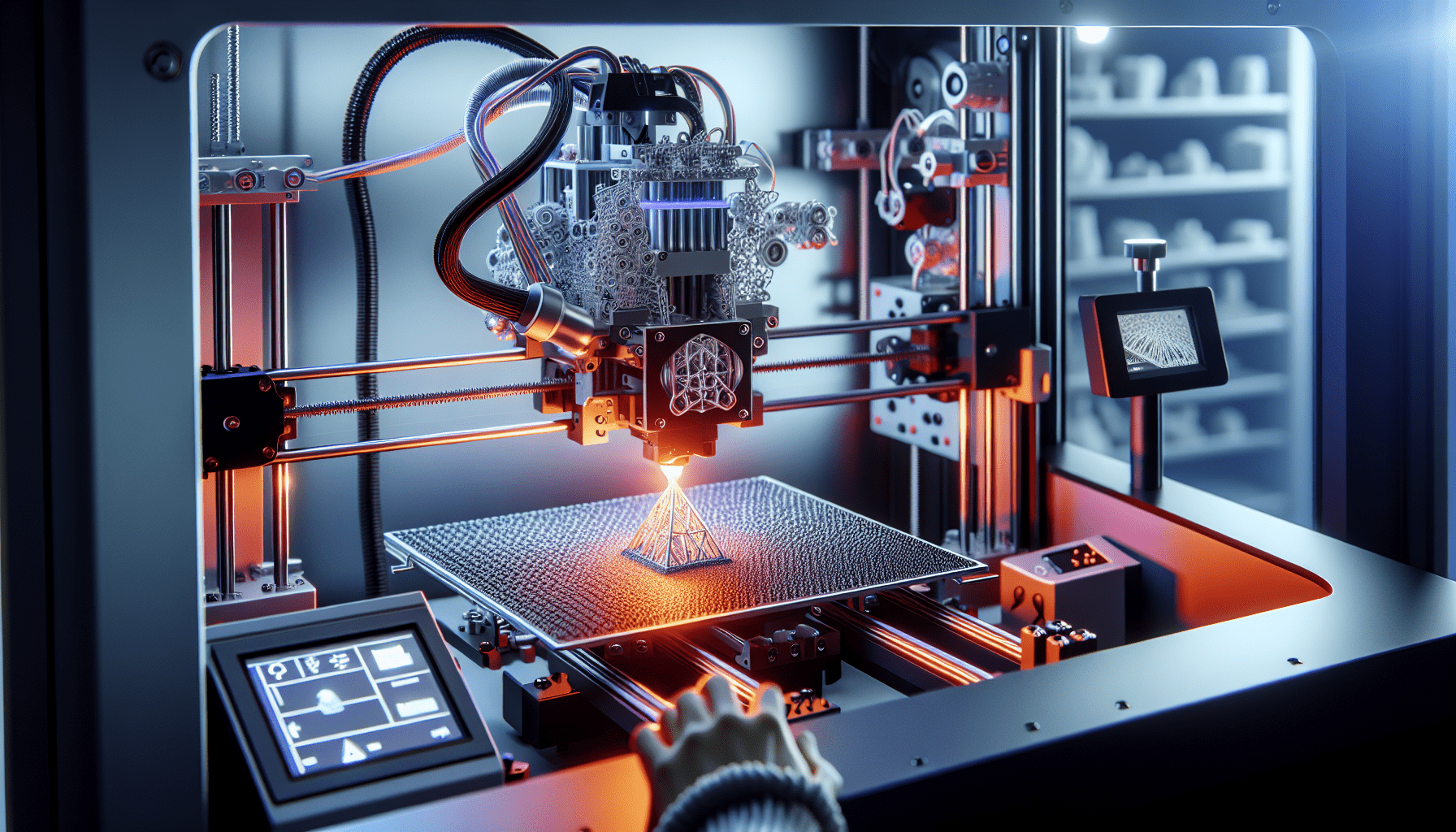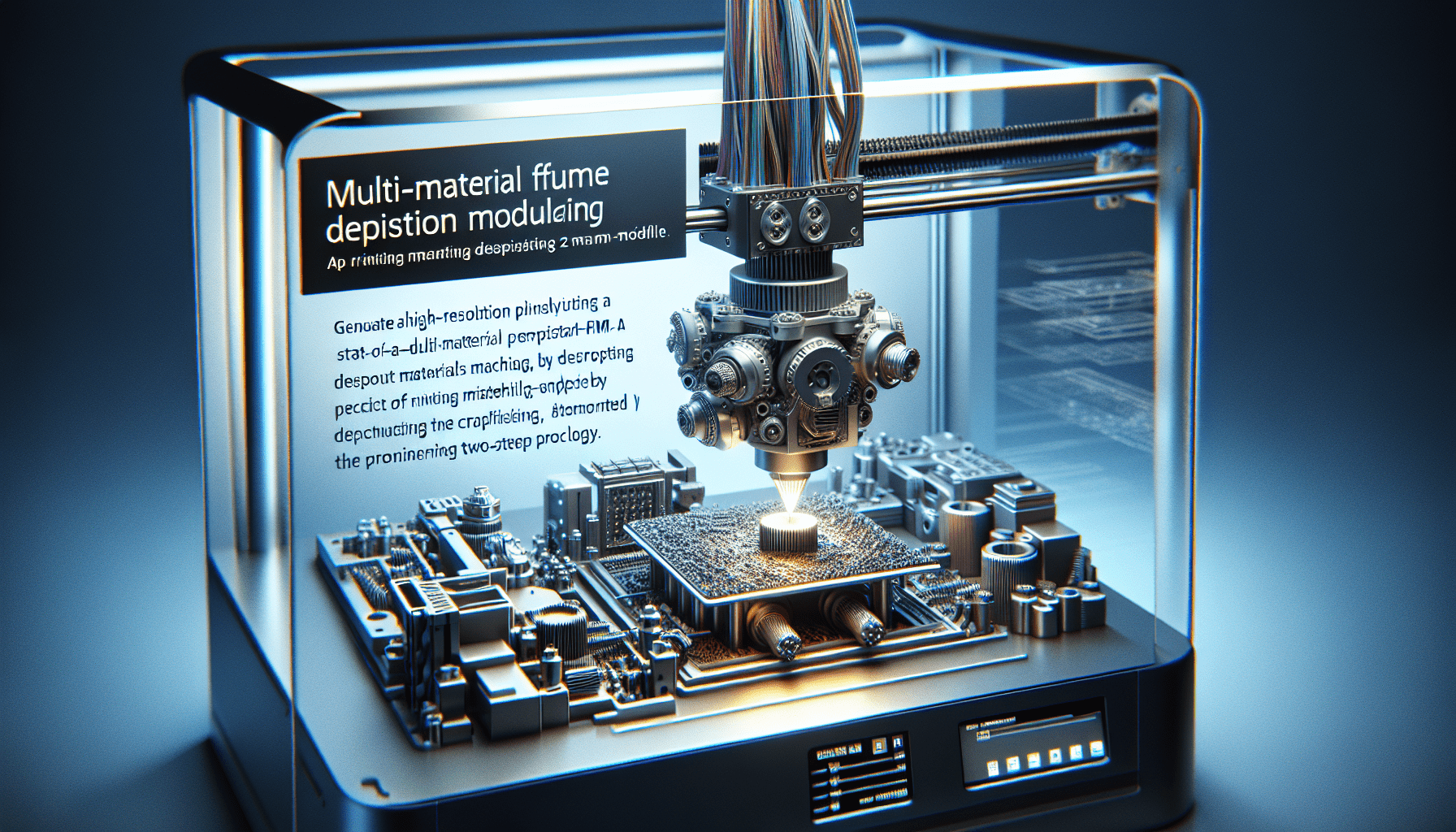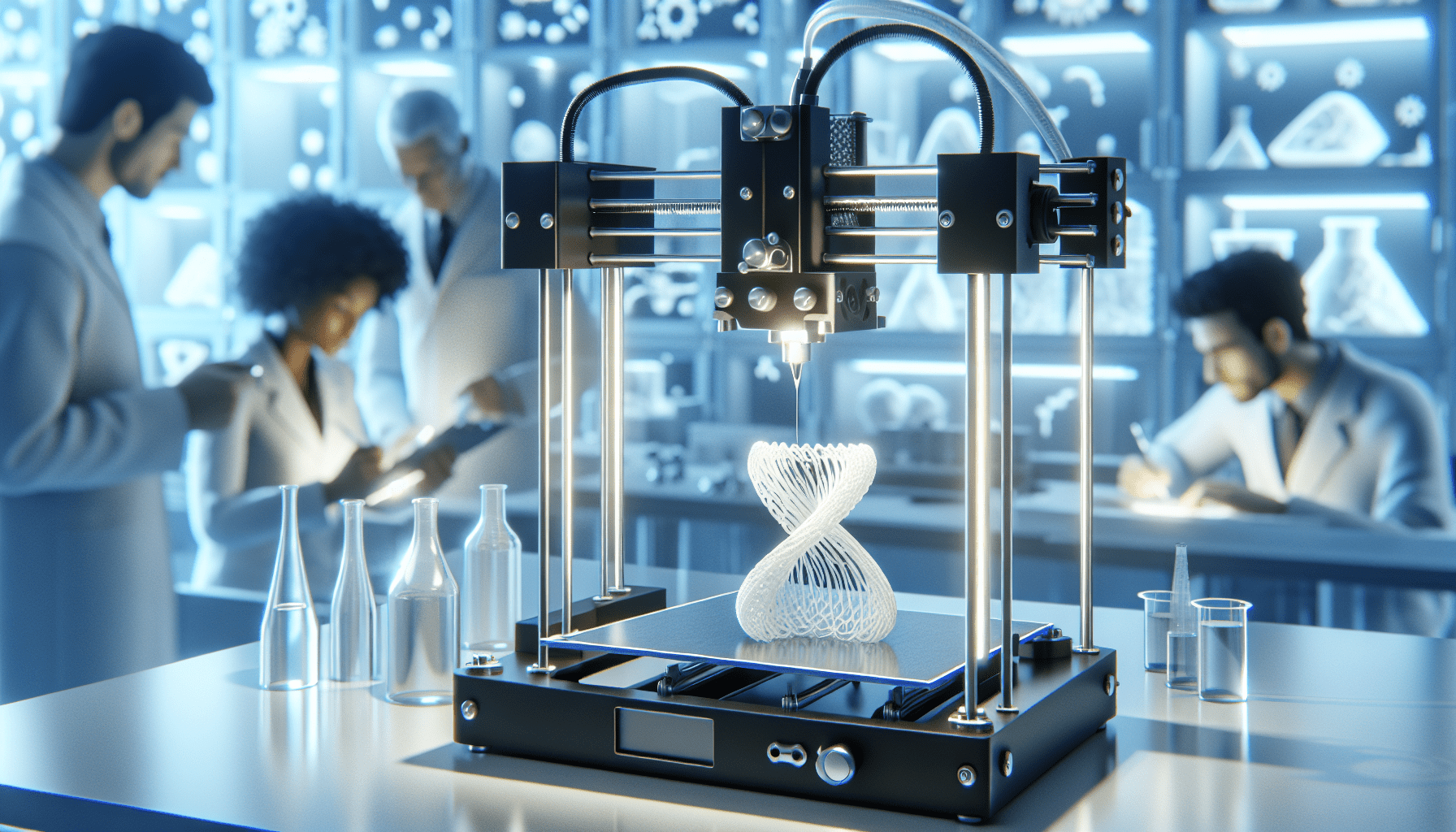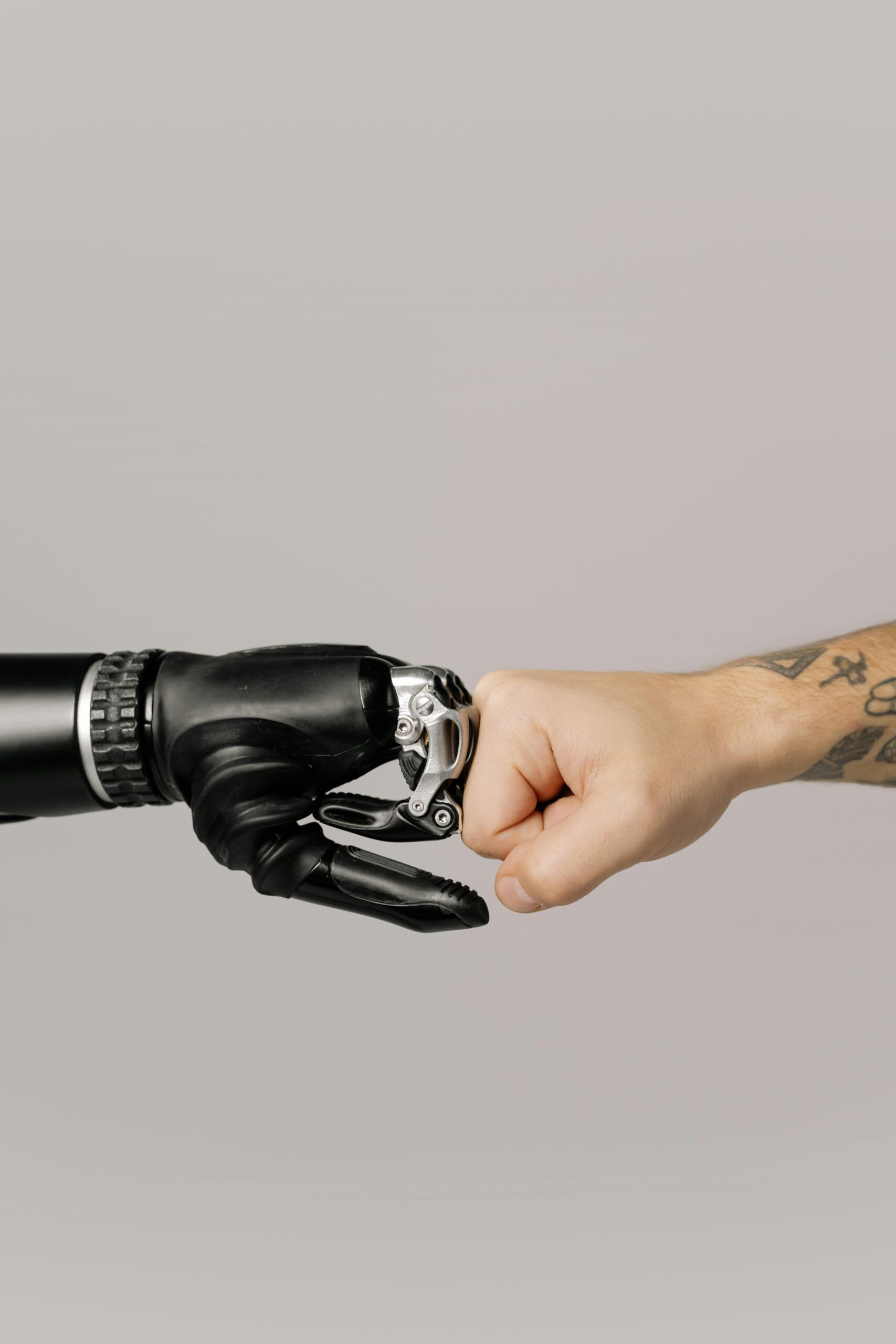Bambu Lab A1 Combo, A1 3D Printer and AMS lite, Support Multi-Color 3D Printing, High Speed & Precision, Full-Auto Calibration & Active Flow Rate Compensation, ≤48 dB Quiet FDM 3D Printers
(as of June 19, 2025 23:45 GMT +00:00 - More infoProduct prices and availability are accurate as of the date/time indicated and are subject to change. Any price and availability information displayed on [relevant Amazon Site(s), as applicable] at the time of purchase will apply to the purchase of this product.)Researchers from Seoul National University have pioneered a groundbreaking two-step process called blended FDM (b-FDM) for multi-material FDM 3D printing. This innovative method creates parts with gradient material properties, overcoming the traditional limitations of single-filament extrusion. Using digital material (DM) filaments made by depositing various base materials layer by layer, b-FDM allows precise control over material composition and distribution within a filament. This results in significant variations in strength, conductivity, and color. The benefits are manifold: b-FDM enables the production of functional gradient materials (FGMs) using standard FDM 3D printers and filaments, making the technology cost-effective and accessible. Researchers have already demonstrated successful multi-functional parts, such as a foldable origami gripper with diverse material properties. The new method promises to expand the capabilities of existing FDM printers, opening up exciting possibilities in engineering applications, from stretchable sensors and wearable electronics to complex, colorful objects with minimal filaments. Have you ever wondered how 3D printing technology could go beyond its current limitations, allowing for even greater versatility and functionality? If so, you’re in for a treat! Researchers from Seoul National University have developed a groundbreaking two-step process for multi-material FDM (Fused Deposition Modeling) 3D printing, offering exciting possibilities for the future of this technology.

$30 off $400+ Anycubic Products with code AC30OFF
Introduction to the Two-Step Process in 3D Printing
At its core, FDM 3D printing has traditionally been limited by the use of single-filament extrusion. This constraint means that while you can print complex shapes, the material properties remain uniform throughout the part. However, researchers from Seoul National University have broken these boundaries by developing a two-step process that integrates multiple materials, enabling the creation of parts with gradient material properties.
A New Era in Multi-Material FDM 3D Printing
The innovative process, known as blended FDM (b-FDM), uses digital material (DM) filaments. These filaments are created by depositing different base materials layer by layer. This technique offers an unprecedented level of control over material composition and distribution within a filament, making it possible to tailor properties such as strength, conductivity, and color in specific sections of a printed part.
Understanding Blended FDM (b-FDM) Technology
b-FDM technology essentially transforms the way we think about material properties in FDM 3D printing.
What is Blended FDM?
Blended FDM (b-FDM) stands for “blended Fused Deposition Modeling.” It’s a method that overcomes the traditional limitations of single-filament extrusion by creating digital material (DM) filaments composed of various base materials deposited layer by layer.
The Magic of Digital Material Filaments
Digital material filaments are at the heart of b-FDM technology. By layering different base materials, you can achieve precise control over the material composition within the filament. This enables you to create printed parts with significant variations in properties, including:
- Strength: Tailor the mechanical strength where it’s most needed.
- Conductivity: Integrate electrically conductive paths.
- Color: Create intricate, multi-colored designs with fewer filaments.
Buy Photon Mono M5 Get Free 1KG Resin
How b-FDM Technology Works
The two-step process developed by the researchers is key to understanding b-FDM.
Step 1: Creating Digital Material Filaments
The first step involves the creation of digital material filaments. Different base materials are precisely deposited layer by layer, forming a composite filament that can exhibit varied properties in specific sections.
Step 2: FDM 3D Printing
The second step is the actual FDM 3D printing process. The digital material filaments are fed into a standard FDM printer, which extrudes them according to the design specifications, ensuring that each printed layer benefits from the specific material properties integrated within the filament.
| Step | Description |
|---|---|
| Step 1: Filament Creation | Layering different base materials to form digital material (DM) filaments. |
| Step 2: 3D Printing | Using FDM 3D printing to extrude the composite filaments into the desired shape and functionality. |
Benefits of b-FDM Technology
The b-FDM technology isn’t just a novelty; it offers tangible benefits that can revolutionize multiple industries.
Precise Control Over Material Composition
One of the standout features of b-FDM is the precise control over material composition and distribution within a filament. This allows for specific tailoring of mechanical, electrical, and aesthetic properties within a single printed part.
Cost-Effective and Accessible
b-FDM enables the production of functional gradient materials (FGMs) using standard FDM 3D printers and filaments. This approach makes it both cost-effective and accessible, opening up the technology to a broader audience without requiring significant investment in new machinery.
Multi-Functional Parts
Researchers have demonstrated successful multi-functional parts using b-FDM technology, like a foldable origami gripper that incorporates different material properties. This ability to design and print parts with varying functionalities within a single piece can broaden the range of applications for 3D printing.

Real-World Applications
b-FDM technology is not merely theoretical; it has practical applications that can significantly impact various fields.
Stretchable Sensors
Imagine creating stretchable sensors that can measure strain or deformation without breaking. The precise control over material properties that b-FDM offers could make this a reality, leading to innovative wearable electronics.
Wearable Electronics
With the ability to integrate conductive and insulative materials seamlessly, b-FDM technology can revolutionize the wearable electronics industry. Think flexible circuits, integrated sensors, and even responsive clothing.
Complex Colored Objects
Creating multi-colored objects usually requires multiple filaments and intricate design work. With b-FDM, you can achieve complex coloration with a minimal number of filaments, simplifying the design and production process.
| Application | Description |
|---|---|
| Stretchable Sensors | Sensors that can measure strain or deformation, benefiting from varying elasticity in the same part. |
| Wearable Electronics | Seamlessly integrated circuits and sensors in flexible, wearable formats. |
| Complex Colored Objects | Multi-colored parts created efficiently with fewer filaments. |
Expanding Capabilities of Existing FDM Printers
One of the most exciting aspects of b-FDM technology is its potential to expand the capabilities of existing FDM 3D printers.
Pushing the Boundaries of 3D Printing
By leveraging b-FDM, existing FDM printers can now print parts with gradient material properties without the need for specialized hardware. This capability can push the boundaries of what is possible with 3D printing, particularly in engineering applications.
Engineering Applications
In engineering, the ability to create parts with tailored properties can lead to more efficient designs and novel solutions. Whether it’s creating lightweight yet strong structures or integrating different functional elements into a single part, b-FDM technology opens up new avenues for innovation.
The Future of b-FDM
As with any groundbreaking technology, the future of b-FDM holds immense promise.
Research and Development
Continued research and development will likely yield even more refined methods for creating digital material filaments and printing multi-material parts. These advancements will make b-FDM even more versatile and easier to use.
Potential for Diverse Applications
The potential applications for b-FDM technology are vast. From medical devices to automotive parts, the ability to integrate multiple material properties into a single part can lead to significant advancements across various industries.
Conclusion
The two-step process developed by researchers at Seoul National University represents a significant leap forward in 3D printing technology. By enabling multi-material FDM 3D printing, it overcomes many of the limitations of traditional single-filament extrusion methods. The result is the ability to create parts with gradient material properties, opening up a world of possibilities in engineering, electronics, and beyond.
So, the next time you think about 3D printing, imagine the fantastic potential that blended FDM (b-FDM) technology brings to the table. Whether you’re a hobbyist, an engineer, or just someone fascinated by emerging technologies, b-FDM offers exciting new possibilities that could very well shape the future of manufacturing and design.
Thank you for diving into the world of b-FDM with us! We hope you found this exploration as exciting and insightful as we did. If you have any questions or thoughts, feel free to share them. Happy printing!
$30 off $400+ Anycubic Products with code AC30OFF








